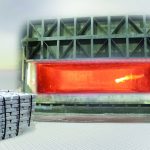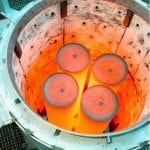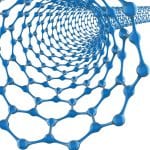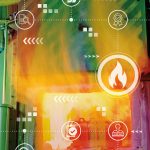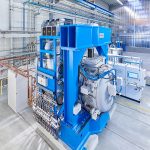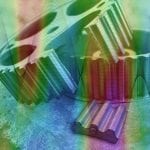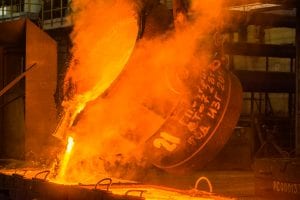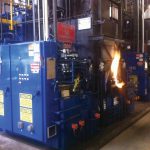Ceramic fiber is essential in various industries involving high-temperature operations. It offers superior thermal resistance for protecting structures, equipment, and machinery from steel and glass production to airplane and space vehicle manufacture.
What is high temperature ceramic fiber?
Ceramic fibers are synthetic materials comprised of small filaments made from high-purity aluminosilicate minerals.
Thanks to their particular properties and composition, ceramic fiber products contribute to preventing and reducing heat losses, in addition to protecting, providing insulation, and optimizing the energy performance of equipment, structures, and process machinery.
Characteristics of ceramic fiber
Ceramic fiber is an ideal insulator in high temperature environments due to its characteristics. These characteristics include:
• Low density. Due to its composition, ceramic fiber has a lower density than other materials, giving it an advantage in its lightness and flexibility. This makes it easy to install and transport.
• Low heat storage. It cools down more quickly, making it ideal when immediate access and handling are required. It has proven excellent for both intermittent and continuous operation applications.
• Low heat loss. It can reduce heat transfer and provide good thermal protection.
• Resistance to thermal shock. It withstands sudden changes in temperature without suffering damage.
• Low thermal conductivity. This reduces heat transfer and provides efficient heat shielding.
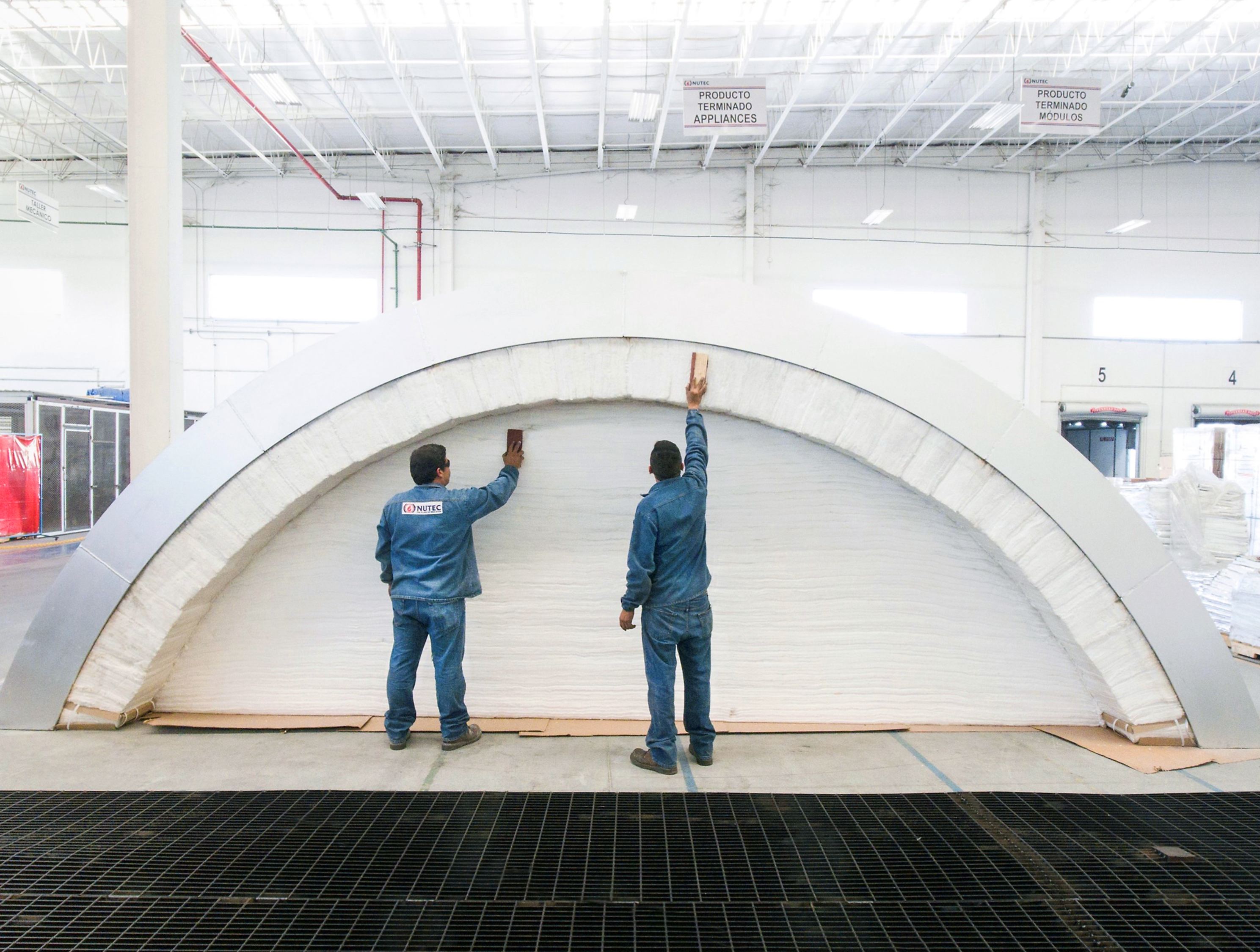
Benefits of refractory ceramic fiber
Compared to conventional materials, ceramic fiber products boast a range of superior attributes:
• Exceptional temperature resistance: Ceramic fiber products can withstand temperatures up to 2,600°F (1,425°C), making them suitable for high temperature environments.
• Outstanding thermal insulation: With low thermal conductivity, ceramic fiber products effectively prevent heat transfer, contributing to energy efficiency and cost savings.
• Enhanced durability: Ceramic fiber products exhibit exceptional abrasion and thermal shock resistance, ensuring long-lasting performance, even under demanding conditions.
• Inherent fire safety: Ceramic fiber products are inherently incombustible and do not emit toxic fumes in case of fire, promoting safety in workplace environments.
• Ease of application: These products are ready to use, eliminating the need for mixing or preparation, and streamlining installation processes.
These characteristics make ceramic fiber products an ideal choice for repairing or augmenting the insulation of various equipment, including furnaces, boilers, pipes, and storage tanks.
Their application effectively enhances thermal efficiency, reduces energy consumption, and extends maintenance intervals.
Classification of high temperature insulation fibers
High temperature insulating wools are used in applications that can exceed 1,112°F (600°C). Depending on the application, they come in various product formulations and chemistries/temperatures. Three main categories are easily available on the market.
Chemical composition/Temperature classification
• Refractory Ceramic Fiber. An example of this from NUTEC includes its MaxWool 2300, which is composed of a mixture of alumina and silica. This material can be used for temperatures up to 2,300°F (1,260°C). Another example is MaxWool 2600, composed of a mixture of alumina, silica, and zirconia. This material can be used for temperatures up to 2,600°F (1,425°C).
• Low Biopersistent fiber. This product is comprised of low biopersistence fibers (also known as biosoluble fibers). They contain a chemical composition of calcium oxide, silica, and magnesium oxide. This product is used at temperatures up to 2,200°F (1,200°C).
• Polycrystalline fiber wool. This product is made from fibers that contain a polycrystalline mullite chemical composition, which allows for high tensile strength, durability, and low shrinkage at high temperatures.
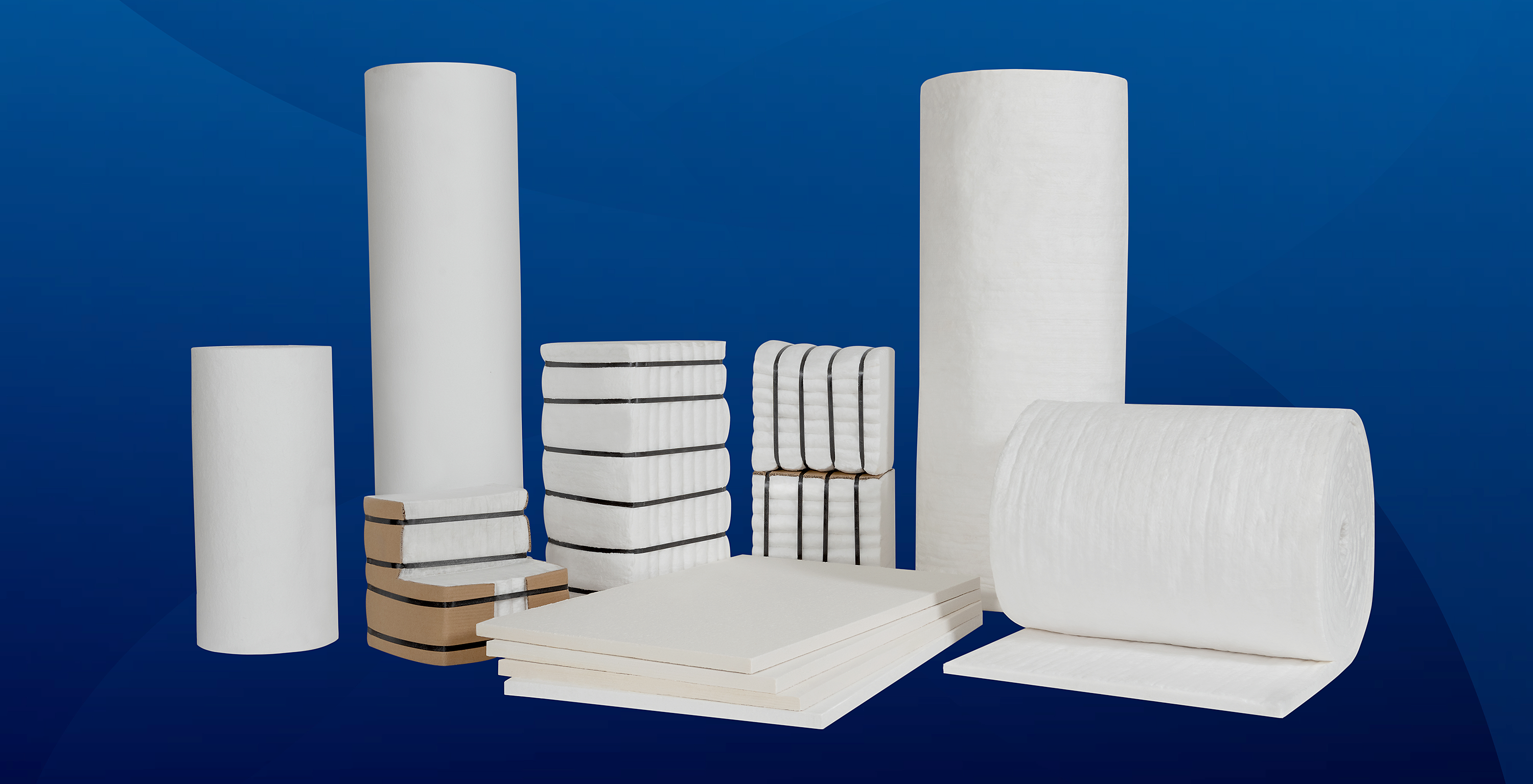
Presentation/Product classification
High-temperature fibers appear like cotton wool when manufactured. These fibers can be shaped into different products depending on the needs and the type of application. The most common forms include:
• Blankets. Fibers are converted into a blanket through a weaving process. They’re used to reduce energy consumption, improve the performance of thermal processes, and increase fire safety in different industrial applications.
• Bulk. Fibers collected after the fiberization process and whose main application is to be used as a raw material for other manufacturing processes.
• Boards. Composed of fibers and a variety of organic and/or inorganic binder fillers that acquire a rigid quality through the vacuum-forming process. They are commonly used as sheeting/cladding and thermal barriers in high temperature equipment.
• Paper. This is a light refractory material. It is strong and can be cut with a utility knife, scissors, or a standard steel razor. Its flexibility allows it to be wrapped or rolled to conform to whichever shapes are required.
• Modules. Fiber blocks are designed to protect industrial furnaces and provide a high-quality insulation system for different processes. Each module is continuously compressed and folded according to a density that contributes to providing a longer useful life to industrial furnaces.
Refractory Ceramic Fiber Coatings and Mixes
Other types of ceramic fiber applications include refractory ceramic fiber mixtures and coatings. These wet products, such as pastes and cements, improve energy efficiency in high temperature industrial processes.
Refractory ceramic fiber coatings and mixes (wet products) are crucial, but what exactly are they? These products offer moldable insulation solutions in various forms, including pastes. Typically, they are prepared using an industrial mixer, combining water, ceramic fiber, and other additives to achieve the desired physical properties.
Some of these products incorporate a vegetable dye that can aid in their application and inspection. Green is standard, but other colors can be used to suit a company’s specific needs.
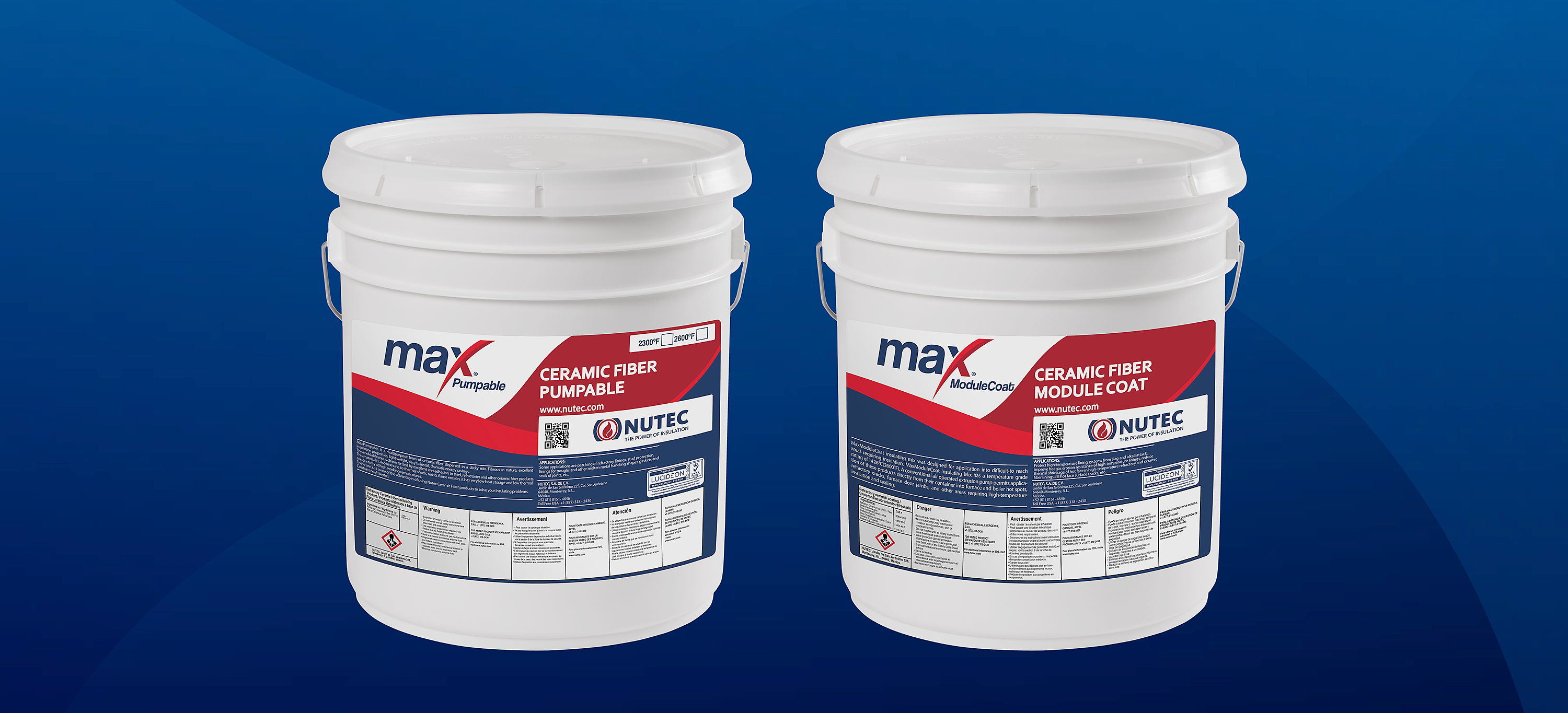
Types of refractory ceramic fiber coatings and mixes
For example, NUTEC manufactures a diverse range of wet products categorized by their type and application:
Moldable products
These products possess a malleable consistency, allowing for effortless shaping with manual tools such as spatulas. Their user-friendly nature makes them a preferred option for exterior repairs and maintenance tasks. In some cases, they can even act as a sealant, effectively repairing cracks and preventing further damage.
Additionally, these ceramic pastes excel in lining channels that transport molten metals, demonstrating exceptional resistance to high temperatures without compromising their integrity.
Pumpable products
Pumpable products are fluid-like materials that can be pumped and applied using specialized guns connected to hoses.
Their primary application is in the quick repair of operating equipment, as the heat generated during the application process aids in the drying and hardening of the ceramic coating.
These materials are injected into predrilled holes or cracks on the equipment’s surface.
Rigidizing products
Rigidizing compounds enhance the hardness and resilience of insulating materials, particularly ceramic fiber blankets. By stiffening the fibers, these compounds extend the service life of the insulation and minimize erosion caused by hot gases.
Additionally, they curtail the release of fiber particles into the surrounding environment, promoting safer working conditions and preventing product contamination during manufacturing processes.
Coatings
Ceramic fiber coatings serve a dual purpose: repairing the thermal insulation of a furnace and preventing wear before its first operation. Among the various formulations available, SealCoat, for example, stands out for its ability to protect the outer surface of installed fiber modules from abrasion and erosion caused by combustion gases.
In essence, these coatings play a pivotal role in extending the integrity and lifespan of the insulation.
Cement products
These are adhesives to bind insulating materials, such as blankets or boards, to metal surfaces. They can also be used to join insulating materials, offering application versatility.
The cements exhibit a thick, creamy consistency, making them suitable for application with a brush or spatula. They can be diluted with water for broader coverage and then used to coat various refractory materials. Once dried, they form a hard, abrasion-resistant layer, ensuring long-lasting performance.
How are wet products made?
While ceramic fiber remains the primary component, NUTEC employs ceramic fiber blankets instead of introducing alumina, silica, or zirconia.
These blankets are cut to specific dimensions before being ground and thoroughly blended with a combination of solid and liquid mineral ingredients.
Considerations
Although these are high-quality products, there are certain factors to consider:
• Shelf Life in Storage. Due to their aqueous composition, these products have a maximum shelf life of six months before becoming unusable. This means maintaining just small inventories and manufacturing them to order.
• Freezing. Low temperatures can irreversibly damage these materials, so protecting them from extreme cold during transport and storage is crucial.
• Appropriate equipment. Pumpable products require abrasion-resistant hoses capable of withstanding extreme injection pressures.
• Expert application. To ensure maximum effectiveness and safety, it is recommended that trained personnel carry out installation.
Considering these precautions, refractory ceramic fiber coatings and mixes such as those offered by NUTEC are ideal solutions to reduce energy consumption and costs throughout the industry.
Their superior thermal insulation properties and high-temperature resistance make them valuable for various applications. Businesses can significantly reduce energy consumption, extend maintenance intervals, and enhance operational efficiency using these products.
With proper storage, handling, and application, refractory ceramic fiber coatings and mixes can provide long-lasting performance and significantly save costs over time.
Industry Applications
Due to its characteristics, ceramic fiber has various industrial applications. For example:
• Ceramics and glass industry. For insulation in kiln and furnace car seals, and lining in doors and walls.
• Automotive industry. For electric vehicles and conventional powertrains, from exhaust heat shields and airbag inflators to lithium battery separators.
• Construction industry. For both ventilation ducts or grilles (commercial premises, hotels, restaurants, and casinos), chimneys, and prefabricated duct systems.
• Oil & gas industry. Protects structures and equipment, such as pyrolysis ovens, heaters, walls, roofs, and crude oil heaters.
• Power generation industry. For boilers, turbines, and pipe insulation, among others.
Conclusion
Ceramic fibers have a high thermal resistance. Their low conductivity and low heat storage improve process efficiency and promote energy savings.
The type of ceramic fiber needed will be determined by the temperature level used and the kind of equipment needed to be protected from heat.
About the authors
Christian Tavira is application engineering and technical support manager with NUTEC. Mauricio Díaz is the technical, process, and continuous improvement manager VF for NUTEC. For more information on what NUTEC can offer, go to nutec.com.













